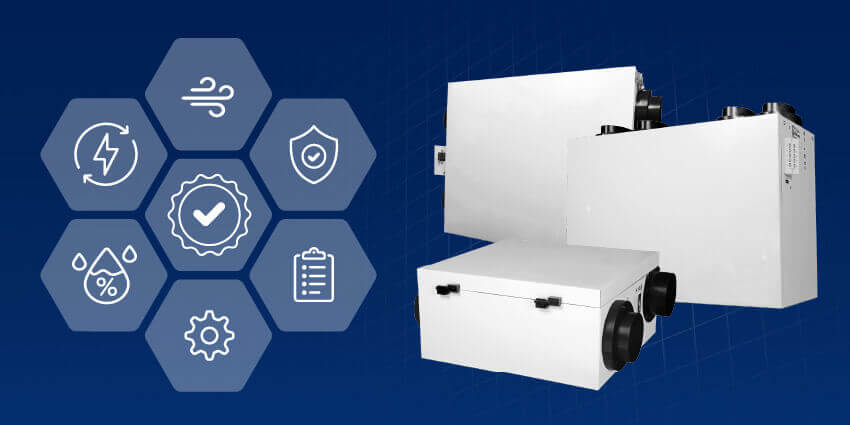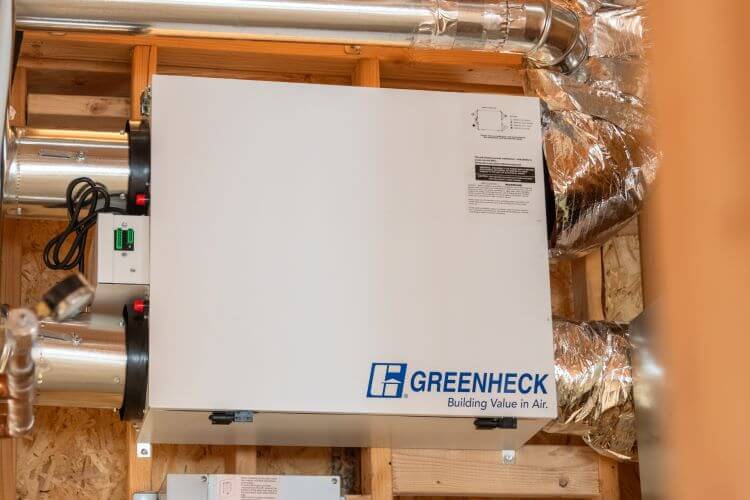Certification for Energy Recovery Ventilators in Multifamily Housing

In new buildings, especially multifamily housing, sustainability is a major focus. Knowing that a building or HVAC/R product is certified for energy-efficient performance helps give an engineer, architect, or building owner peace of mind. Energy recovery ventilators (ERVs), which capture energy from exhaust air and use it to pretreat supply air to a comfortable temperature and humidity, are an innovative and reliable way to make a building energy-efficient.
But how does one know if the ERVs, or the buildings that use them, are actually efficient? Certification can provide that assurance. In the United States, three different types of energy performance standards certify residential ERVs and/or the energy performance of multifamily buildings themselves.
- Home Ventilating Institute (HVI)
- Air-Conditioning, Heating, and Refrigeration Institute (AHRI)
- Passive House Institute (PHI), which is known in the U.S. as Passive House Institute U.S., or PHIUS
Read on to learn the differences between these certifications and how they interact with codes and standards.
HVI Certification
HVI certifies products, not buildings. It focuses on equipment for use in residential buildings.
The HVI method tests the entire ERV as an operating unit. It measures cross-airstream leakage and fan power, using those values to calculate the standalone performance of the heat exchanger. It also accounts for airstream leakage from the cabinet. It tests different airflows so that users can calculate the performance curve, as well.
Greenheck’s energy recovery ventilators for residential buildings are proudly HVI-certified. They also have simple control wiring that connects easily with other equipment such as air handlers and dampers. Most Greenheck ERV units are equipped with precision balancing. When paired with the PrecisionSYNC™ control, they provide real-time airflow measurement and allow for fine-tuning to achieve optimal performance.
HVI certification can be used to meet codes and standards such as ASHRAE 62.1 and 62.2, as well as the International Energy Conservation Code (IECC). It is also included in California’s Title 24, the California Building Standards Code.
 |
| An HVI-certified Greenheck SYNC-180™ energy recovery ventilator. ©2024 Visuals by Insignia Studios / courtesy Pro Builder Media. |
AHRI Certification
AHRI also certifies products rather than buildings. The member companies of AHRI manufacture and sell more than 90% of the HVAC/R and water heating residential and commercial equipment in North America. Greenheck’s ERVs for commercial buildings hold AHRI certification.
AHRI certification can be used to demonstrate compliance with ASHRAE 90.1 and is referenced in IECC codes as well as numerous state and local building codes.
Passive House/PHIUS Certification
The Passive House Institute (also known as Passivhaus or PHI) was founded in Germany in 1990 to certify buildings and products that meet a very high energy standard. Some North American manufacturers of residential ERVs, including Greenheck, choose to pursue HVI product certification over PHI certification. This is primarily due to HVI’s long-standing position as the authority and lead certifying body of residential-use ventilation products in North America.
PHI spread to the United States under the name PHIUS. PHIUS currently does not have a product certification program for ERVs and relies on data from other third-party agencies, such as HVI, to ensure product performance. HVI-certified products can be used without penalty in PHIUS-certified buildings if they contribute to meeting the PHIUS energy standard.
There are two main energy code paths that residential builders in the U.S. can follow. One is prescriptive, where building components and systems must meet a checklist of requirements. The other is performance-based, where builders must use energy simulation software to calculate the building’s projected energy consumption and demonstrate that the building’s components and systems meet or exceed energy requirements. Performance-based PHIUS certification is commonly used to demonstrate compliance.
PHIUS uses an energy modeling program called WUFI, which calculates many factors including building materials, climate, and HVAC/R components to arrive at an energy rating for the building. Greenheck’s many ERV products allow for flexibility and trade-offs in meeting WUFI requirements. From cost-effective options all the way up to high-efficiency ERVs with precision controls, Greenheck’s product range can help meet PHIUS’s design requirements and comply with building codes in many states. Colorado, Washington, and Massachusetts, among other states, include PHIUS certification as an option.
Conclusion
Residential energy recovery ventilators help to improve indoor air quality by bringing in filtered outdoor air, which is tempered with energy recovered from exhaust air. This leads to energy cost savings and can help buildings meet energy standards such as the ones through HVI, PHIUS, and AHRI. These standards, in turn, help minimize energy consumption and greenhouse gas emissions, contributing to a more sustainable environment.
Learn more about Greenheck’s residential energy recovery ventilators here. Your local Greenheck representative can also discuss options for bringing energy recovery to a multifamily building.
Additional source used:
“Heat/Energy Recovery Ventilation: A Review of Certification Programs.” PowerPoint presentation. 2050 Partners. August 6, 2019.Energy Recovery


from